Hypoxia: the superpowers of gentle rehabilitation
A pioneer in France, the Clinique des Lilas (near Paris) uses hypoxia to simulate high-altitude conditions. This technology, which until now has been used only for sports training, is proving to be particularly effective in rehabilitating patients. Let's take a look at this innovative practice with Dr Fouad Chami, emeis' rehabilitation coordinating doctor at the Paris Est Cardio-Nutritional Rehabilitation Centre, and the head of rehabilitation, Amine Chaanouni.
Hypoxia, a matter of red blood cells
Hypoxia is a reduction in oxygen supply. Patients are exposed to an oxygen-poor environment that forces the body to adapt to optimise its efficiency. This adaptation stimulates the production of red blood cells, improves endurance capacity and promotes better effort management. "The benefits of hypoxia in improving blood circulation are well established: the overproduction of red blood cells stimulates blood circulation. And it's an excellent way of helping our patients recover better, faster and in greater comfort," explains Dr Chami.
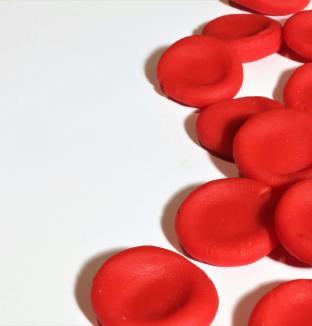
The Lilas hypoxia chamber: a first in France
France is a long way behind other countries such as Germany, Switzerland, the United States and Canada, where numerous centres exist. Most of our French healthcare structures that are interested in hypoxia do so mainly as part of scientific research. The Paris Est cardio-nutritional rehabilitation centre stands out by offering hypoxia, not as an object of study, but as a treatment solution for people with heart disease or suffering from metabolic disorders such as diabetes and excess weight.
When we embarked on this project, we embarked on an observational study, with procedures based on a battery of biomarkers, explains Dr Chami. The patient volunteers were also subjected to initial exercise resistance tests."
Amine Chaanouni describes it as "a great challenge for the rehabilitation team". And he continues: "We had to immerse ourselves in scientific references to learn all about the benefits of this approach. Then, together, we drew up a series of protocols. With Dr Chami, we worked on a session template that we then adapted to the patient's profile."
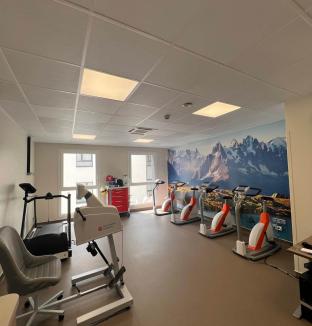
The key stages in a hypoxia session
Each session is subject to a strict written protocol guaranteeing complete traceability and personalised monitoring to achieve the objectives set.
Each patient undergoes a prior assessment to rule out any risks and to adapt the therapeutic approach as effectively as possible. Amine Chaanouni outlines the three phases of a session:
- the warm-up phase
- the "body" phase (breathing work or muscle strengthening, depending on the patient's needs)
- the cool-down phase (stretching and rest).
The measurements are monitored by a nurse or a member of the nursing staff. A session generally lasts between 30 and 45 minutes and, unlike hypoxic sports training, takes place under normobaric conditions (normal ambient pressure).
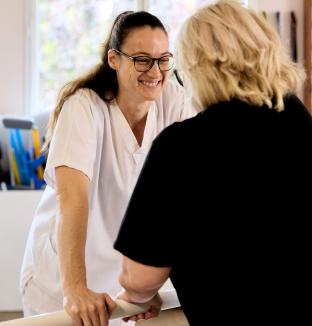
Very promising initial results
An initial group of six patients was selected. Among them were five people with various cardiac pathologies and one obese person, intentionally placed in a passive situation. Dr Chami makes no secret of his enthusiasm: "After 5 weeks, the results were spectacular. Some patients saw their iron levels rise considerably, without any supplementation. One person went from an effort load of 200 watts to 270 watts and gained 10 points on his heart rate! We turned him into a marathon runner without him even realising it!" As for the obese patient, he lost weight without the slightest physical effort.
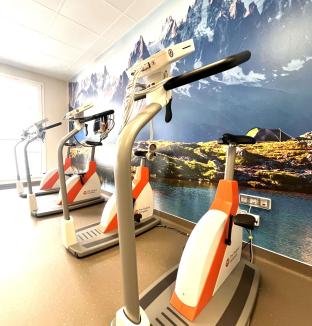
The contraindications and constraints of hypoxia to date
Among the absolute contraindications, Dr Chami mentions severe heart conditions and and uncontrolled serious respiratory disorders.
"Although the initial results are more than encouraging, we have to be extremely vigilant, hesays. We're still in the exploratory phase." However, he is confident that the practice will become widespread in the years to come. Of course, equipping a hypoxia room and mobilising a dedicated multidisciplinary team represents a substantial investment. But, in his view, "our role as a pioneer is to participate in the deployment of this practice and to bring together expertise. Our aim is to become a benchmark centre that will move the yardsticks". If this approach becomes more widespread, patients could eventually benefit from even partial coverage of their treatment.
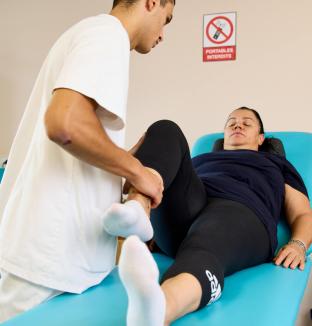
Summary of the main benefits of hypoxia
The field of application is broad. Among the applications of hypoxia in rehabilitation are:
- Locomotor rehabilitation after injury or surgery
- Cardiac rehabilitation
- Respiratory rehabilitation
- Stimulation of muscle growth and neuronal plasticity
- Accelerated recovery of damaged tissue
- Improve blood circulation
- Reduced pain sensation, leading to a reduction in the need for medication
Let's hope that the Clinique des Lilas rehabilitation center will be just the first of many rehabilitation facilities to adopt hypoxia in their treatment programs.

